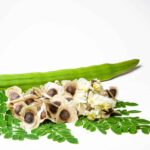Have you ever been fascinated by the beauty of a flowering plant? If so, then you’ll find Hoya macrophylla to be an intriguing choice. This species of hoya is known for its beautiful, star-shaped blooms. But what makes this plant so special and how can you grow it in your own garden? Read on to learn more about the care and cultivation of Hoya macrophylla!
As a specialist in botany and gardening, I’m passionate about helping others grow their own plants. Hoya macrophylla is a stunning addition to any garden, with its vibrant pink flowers that bloom throughout the year. With proper care, this species of hoya can thrive indoors or outdoors. By understanding the needs of this unique flowering plant, gardeners can create a thriving environment for their Hoya macrophylla.
In order to best care for your Hoya macrophylla, it’s important to understand what type of soil and lighting conditions are suitable for this particular species. In addition, you should also consider factors such as humidity levels and fertilizing requirements. With these tips, you can ensure that your Hoya macrophylla will have optimal growing conditions and produce beautiful blooms for years to come!
What Is Hoya Macrophylla?
Hoya macrophylla is a captivating and curious plant, with its delicate leaves that mimic the shape of a star. Its vines trail delicately, like a dancer’s arms gracefully extended as they move across the stage. It’s an easy to care for plant that adds beauty and charm to any home.
This species is part of the Apocynaceae family and originates from Southeast Asia. It has thick green foliage with large oval leaves that are slightly pointed at the ends. The leaves can reach up to six inches in length and are usually found in clusters of five or more along the stem. Its flowers are small, white, fragrant stars that grow in clusters on long peduncles from spring to fall.
Overall, it’s an ideal houseplant for those who want something interesting without having to dedicate too much time or resources to its care. With proper light, water and fertilizer, this sweet-smelling flower will bring life into your living space for years to come!
Where To Plant Hoya Macrophylla
When planted in the right conditions, Hoya macrophylla can be a beautiful addition to any garden. Take for example the large, sprawling specimen at the entrance of the San Diego Zoo. This succulent vine is capable of growing up to 30 feet tall and blooming with fragrant, star-shaped white flowers in late summer.
When selecting a spot for your hoya macrophylla, it’s important to consider the amount of sunlight it will receive throughout the day. The ideal location is one that receives direct sunlight for 4-6 hours per day. If you plant in an area with too much shade, you may end up with fewer blooms or no blooms at all. Additionally, make sure you have enough space for your hoya macrophylla to spread out and grow, as it can get quite large when given enough room to do so.
When planting hoya macrophylla, it’s also essential to consider soil quality and drainage. Choose a soil mixture that is well-draining but still retains some moisture, such as a mix of potting soil and sand or peat moss and perlite. Additionally, add organic matter like compost or worm castings to improve nutrient levels and increase water retention in the soil. With these conditions in mind, your hoya macrophylla should thrive and produce abundant blooms!
Soil Requirements For Hoya Macrophylla
Gardening with Hoya macrophylla can be an enjoyable experience. With their glossy foliage, these plants make a great addition to any garden. But before planting, it’s important to understand the soil requirements for this plant species. Let’s take a look at what you need to grow and care for your Hoya macrophylla plants.
Firstly, Hoya macrophylla prefers well-drained soil in order to thrive. It should be rich in organic matter and have a slightly acidic pH level of 5.5-6.5. You should also consider adding mulch or compost to help retain moisture and provide essential nutrients for successful growth and development of the plant.
Secondly, when it comes to soil texture, any medium-grade potting mix would work well for this plant species but you may want to add some extra perlite or vermiculite for good drainage if needed. Additionally, you may also need to amend the soil with some fertilizer occasionally in order to keep your plants healthy and vigorous throughout their growing season.
Lastly, it is important that you monitor the moisture levels of the soil by checking it regularly with your finger or a digital moisture meter. If the soil feels dry then add some water but make sure not to over water as the roots of this plant are prone to rot if they are kept too wet for too long. By understanding these soil requirements and following them carefully, you will be able to ensure that your Hoya macrophylla plants remain healthy and happy in your garden!
Watering Needs For Hoya Macrophylla
Hoya macrophylla is an exciting and rewarding plant to grow. It has lush green foliage, a pleasingly sweet scent, and vibrant flowers that look as if they were painted in watercolor. To ensure its best growth, here are 4 tips for its watering needs:
Water the hoya macrophylla potting soil thoroughly when the top inch of soil feels dry. This typically occurs every 7-10 days during the growing season, but more often during periods of high heat or low humidity.
Reduce watering frequency during winter months when growth slows down. Allow the top 2 inches of soil to become completely dry before watering again.
Give your hoyas just enough water to moisten the soil without saturating it – overwatering can cause root rot and other problems.
Use tepid rainwater or distilled water whenever possible; tap water may contain too much salt for sensitive plants like hoya macrophylla.
Monitor your plant’s condition closely and adjust your watering habits accordingly for best results! Remember that too little water will cause leaves to curl and wilt, while overwatering can lead to drooping leaves or yellowing foliage. With proper care and attention, you’ll have a healthy and beautiful hoya macrophylla in no time! Now that we’ve covered watering needs for this plant, let’s move on to understanding sunlight requirements for optimal growth.
Sunlight Requirements For Hoya Macrophylla
Are you looking to grow a hoya macrophylla? Well, if so, then you have come to the right place! This plant is quite spectacular, with its large leaves and pretty yellow flowers. But, it does require some special care and attention. In this article, we will explore the sunlight requirements for this exotic looking houseplant.
Firstly, let’s start off by saying that hoya macrophylla needs at least four hours of full sun each day. This means placing your plant in an area that gets plenty of bright light from midday through mid-afternoon. However, too much direct sunlight can be damaging to this plant – so avoid putting it in a south-facing window or anywhere else that receives direct light all day long.
When it comes to keeping your hoya macrophylla happy and healthy, be sure to keep an eye on its leaves. If they are yellowing or wilting, then it could be a sign that the light levels are too high and should be reduced. You may also want to check if the soil is draining properly as over-watering can also cause drooping leaves.
TIP: If you don’t have access to natural sunlight sources such as windows or balconies, consider investing in grow lights for your hoya macrophylla. This will ensure that your plant always has enough light even during winter months when there is not enough natural sunlight available!
Temperature Requirements For Hoya Macrophylla
A thriving Hoya macrophylla is a sight to behold! Its lush foliage, cascading branches and star-shaped flowers make it an attractive addition to any garden. But if you’re planning on growing one of these tropical plants, you need to be aware of its temperature requirements. After all, getting the temperature just right can make all the difference between success and failure in cultivating this species.
When it comes to temperature, Hoya macrophylla prefers warm conditions with high humidity. It’s best suited for temperatures between 65°F and 85°F during the day, dropping to around 60°F at night. If the temperature drops lower than this or rises higher than 85°F for too long, the plant is likely to suffer from heat stress or cold damage. An easy way to ensure that your Hoya macrophylla stays happy is by placing it in a spot where it will be protected from strong winds and direct sunlight – both of which can cause drastic fluctuations in temperature.
Furthermore, remember that Hoya macrophylla grows naturally in humid regions like Malaysia, India and Indonesia – so providing extra humidity when growing indoors is vital in order for the plant to thrive. Investing in a humidifier might be necessary if you live in a dry climate; or alternatively, you could try misting your plant regularly with water or setting its pot on a tray filled with wet pebbles. With some careful monitoring of your Hoya macrophylla’s environment – including its temperature – you should soon have a healthy specimen producing those beautiful blooms!
Fertilizing Requirements For Hoya Macrophylla
When it comes to fertilizing Hoya macrophylla, there are some important considerations. It is essential to use a fertilizer that is designed for flowering plants, as this will ensure an adequate level of nutrients for the plant’s development. Additionally, when applying fertilizer, it is recommended to do so in moderation and dilute the concentration accordingly. If a fertilizer is applied too often or with too high of a concentration, the plant can suffer from nutrient burn or become deficient in certain nutrients.
When it comes to timing of application, it is best to feed Hoya macrophylla every two weeks during its active growing season (spring and summer). During fall and winter months, reduce feeding intervals to once a month as the plant enters a period of dormancy. Furthermore, make sure not to apply fertilizer directly onto the foliage as this can cause unsightly discoloration and even damage the leaves.
It is also important to note that if your Hoya macrophylla has been planted in soil mix with peat moss or coconut fiber, then no additional fertilizers are necessary as these ingredients have enough nutrients for healthy growth. However, if you are using regular potting soil without any additional components such as peat moss or coconut fiber, then regular applications of fertilizer will be required in order to keep your plant healthy and thriving.
By following these guidelines when it comes to fertilizing Hoya macrophylla, you can help ensure that your plant gets all the nutrition it needs while avoiding potential nutrient burn or deficiency problems. With proper care and attention given each season, your plant should thrive and create beautiful blooms throughout its growing cycle. Now let’s move on to propagating Hoya macrophylla – an exciting activity that many gardeners enjoy!
Propagating Hoya Macrophylla
Propagating Hoya macrophylla is like a gardener creating a new garden with carefully planted seeds. It takes patience and careful tending to get it to grow and blossom into a beautiful flower. With the right knowledge, techniques, and tools, anyone can turn a single plant into many more.
When propagating Hoya macrophylla, there are several methods to choose from. The most common method is cuttings – using pieces of the stem or branches to form new plants. Since this plant is known to produce adventitious roots, you can also use air layering as another option. This involves cutting deep enough into the stem so that roots can develop, while still keeping the original plant intact.
When selecting cuttings for propagation, it’s important to pick healthy stems that are at least three inches long. Make sure the cutting has at least two sets of leaves and make sure to take off any flowers or buds so that the energy goes towards root development instead of flowering. Place cuttings in moist soil and keep them in indirect sunlight until they start growing roots and top growth before gradually introducing them to more sunlight.
TIP: For successful propagation be patient and remember not to overwater as this could lead to root rot!
Pruning And Training Hoya Macrophylla
Pruning and training Hoya macrophylla is a great way to shape the plant and keep it looking its best. It’s essential to understand the basics of pruning before getting started and this guide will ensure you have all the information needed to prune and train your Hoya macrophylla with confidence. Here are four tips on how to get started:
Start pruning when your plant is young, as it’s easier to control where the branches grow when they are new growth.
Cut off any dead leaves or stems that are causing overcrowding in order to encourage healthy branching.
Use thin wires or string to shape and support branches if necessary, but be careful not to tie them too tightly as it can cause damage to the stem.
Always use clean, sharp tools when pruning your plant in order to prevent any diseases from spreading between plants.
It’s important to remember that you don’t want to remove too much of the foliage from your Hoya macrophylla, as this can reduce its flowering potential and slow down growth during the next season. When done correctly, pruning can help maintain a healthy structure for your plant without sacrificing its beauty and health. With proper care and attention, you can enjoy a beautiful Hoya macrophylla for many years! Moving on, let’s discuss pests and diseases of Hoya macrophylla – an important topic when caring for such a delicate specimen.
Pests And Diseases Of Hoya Macrophylla
The pests and diseases of hoya macrophylla can be a gardener’s worst nightmare. If not managed properly, they can cause catastrophic damage to this beautiful plant. Fortunately, with some preventive measures and proper care, you can keep your hoya macrophylla healthy and pest-free. Absolutely amazing!
To stay ahead of pests and diseases, here are three key steps:
- Monitor your hoya macrophylla regularly for signs of infestation or disease. Check the stems and leaves for any suspicious activity such as discoloration, wilting, holes or other signs.
- Practice good gardening hygiene by removing dead foliage from the plant to reduce chances of pest infestation. Also make sure to clean and disinfect garden tools after use to avoid spreading infectious agents from one plant to another.
- If your hoya macrophylla shows signs of infection or pest infestation, treat it with an appropriate pesticide or fungicide as soon as possible in order to stop the spread of the problem.
These simple steps will help you successfully manage pests and diseases on your beloved hoya macrophylla so that you can enjoy its beauty for years to come! Moving forward, let’s look at how we can repot and transplant our hoya macrophylla in order to ensure continued health and growth.
Repotting And Transplanting Hoya Macrophylla
“The best time to transplant is before the root system gets too big,” they say. Repotting and transplanting Hoya macrophylla can be a daunting task, but if done correctly, it can reap many benefits. With these helpful tips in mind, here are three ways to successfully repot and transplant your Hoya macrophylla:
Choose a pot that has ample space for the root system of the plant. Make sure it’s made of a breathable material such as terracotta for proper drainage.
Create a soil mix specifically for Hoya macrophylla with ingredients such as peat moss, perlite, bark chips and vermiculite. This will ensure that there is enough air circulation and moisture retention for the plant’s roots.
When transplanting, be sure to carefully remove the plant from its old pot and gently loosen the soil before placing it into its new home. Water thoroughly after to help settle the soil around the roots of your Hoya macrophylla.
These steps will help to ensure that your beloved Hoya macrophylla stays healthy and continues to thrive in its new home. With this knowledge, you can now move on to Container Gardening with Hoya macrophylla – an exciting new way to grow this amazing plant!
Container Gardening With Hoya Macrophylla
Container gardening is a popular way to enjoy hoya macrophylla, with over 50% of gardeners tending to plants in containers. This beloved houseplant adds a tropical feel to any room and is surprisingly easy to care for. When it comes to container gardening with hoya macrophylla, there are a few things to bear in mind.
To start with, the type of pot you use will have an impact on the plant’s growth and health. Terracotta or ceramic pots are ideal as they allow soil to dry out quickly between waterings, which helps prevent root rot. Furthermore, using a pot with drainage holes ensures that excess water can escape easily and prevents soggy soil. Additionally, be sure to choose a pot that is big enough for the roots of your hoya macrophylla – if it’s too small then the roots may become pot bound which can stunt its growth.
When positioning your pot indoors, make sure it receives bright indirect light away from any direct sunlight as this can damage its leaves. It’s also worth investing in a saucer or tray underneath the pot as this will catch any water run-off when watering and help protect your flooring from staining or damage.
Finally, fertilizing your hoya macrophylla every couple of months will help promote healthy foliage growth and keep it looking vibrant throughout the year. Applying balanced liquid fertilizer according to package instructions every other month should keep your houseplant happy and healthy – just be sure not to over-fertilize! With these container gardening tips in mind, you’ll be able to successfully grow beautiful hoya macrophylla indoors all year round!
Growing Hoya Macrophylla In Hanging Baskets
Hanging baskets are an ideal way to grow and display Hoya macrophylla. This evergreen shrub with leathery, deep-green leaves is a fast-growing climber that can reach up to three meters in height. It bears clusters of fragrant, white flowers. Growing Hoya macrophylla in hanging baskets allows gardeners to enjoy its attractive foliage and sweet scent while also keeping it under control.
When growing Hoya macrophylla in hanging baskets, be sure to use a light, well-draining potting mix that contains composted bark, coco coir, or other organic matter. To ensure the soil remains moist but not soggy, add a thick layer of mulch on top of the potting mix and water regularly. Place the basket in bright indirect light; too much direct sunlight can scorch the foliage and reduce flowering.
Fertilize your plants during the growing season with a balanced liquid fertilizer formulated for flowering plants every two weeks. Once established, this plant requires minimal care; simply water when the top inch of soil becomes dry and prune as needed to maintain desired size and shape.
TIP: While most hoyas prefer high humidity levels (60-80%), Hoya macrophylla will do well in any household humidity level as long as it’s not too dry or overly wet.
Troubleshooting Common Hoya Macrophylla Problems
Hoya macrophylla is a popular species of flowering plant due to its fragrant blooms and easy care requirements. However, despite being easy to care for, it’s not immune to problems. To ensure your Hoya macrophylla grows healthy and strong, here are some common troubleshooting tips:
Too little light can cause the leaves to yellow if the plant isn’t receiving enough light. Make sure that you provide indirect sunlight or bright light while avoiding direct sun exposure.
Overwatering is another common issue with Hoya macrophylla, as too much water can cause root rot and other issues. Allow the soil to dry out between waterings and avoid getting any on the foliage.
Under-fertilizing can lead to stunted growth in your Hoya macrophylla. Provide a balanced fertilizer every 2-4 weeks during the growing season and make sure not to over-fertilize either!
Pests such as aphids, mealybugs, and scale insects can all feed on Hoya macrophylla plants. Keep an eye out for signs of infestations and use insecticidal soap or neem oil as needed.
By following these tips, you should be able to keep your Hoya macrophylla healthy and thriving! It’s important to pay attention to any signs of trouble such as stunted growth or discolored leaves so that you can address them before they become more serious issues. With proper care and attention, you’ll be rewarded with beautiful blooms from this gorgeous houseplant!
How To Harvest And Store Hoya Macrophylla
Harvesting and storing Hoya macrophylla is an important part of caring for this tropical evergreen vine. It’s essential to know when and how to do it properly, so you can enjoy the plant for many years. In this article, we’ll discuss the techniques for harvesting and preserving your Hoya macrophylla.
The first thing to know is when to harvest the plant. Generally speaking, you should harvest Hoya macrophylla during the early summer months when temperatures are moderate and the plant has had a chance to get established in its environment. Look for bright green stems that are firm and without any blemishes or discolorations. These will yield the best results when stored.
Once you have harvested your Hoya macrophylla, there are a few steps you need to take to preserve it effectively:
• Cleaning: Before storage, make sure to brush off all soil or debris from the roots and stems of your plants using a soft brush or cloth.
• Drying: Allow your harvested Hoya macrophylla to air-dry in a shady area for two days before beginning storage.
• Storing: When storing your plants, store them in paper bags or cardboard boxes in an area with good ventilation away from direct sunlight and extreme temperatures. Place damp newspaper between layers of leaves if needed, but be sure not to overcrowd them.
As with any other plant, proper care is essential when harvesting and preserving Hoya macrophylla. Taking these simple steps will ensure that your plants will stay healthy and vibrant throughout their life cycle. With patience and dedication, you’ll be able to enjoy beautiful blooms for many years!
Frequently Asked Questions
How Often Should I Water My Hoya Macrophylla?
Taking care of Hoya macrophylla is essential for a healthy, thriving plant. As with any other houseplant, proper watering and humidity are key to its health. When it comes to watering your Hoya macrophylla, the rule of thumb is to water when the top 2-3 inches of soil are dry and then water thoroughly until excess moisture runs through the drainage holes. It’s important not to let the soil dry out too much or become soggy as either can cause stress or death of your plant.
To ensure adequate humidity, it’s best to mist your plant every few days or use a humidifier in the room if necessary. If you’re growing your Hoya macrophylla indoors, then consider using pebble trays filled with water that can increase humidity around your plant.
It’s also beneficial to fertilize your Hoya macrophylla once a month during spring and summer months with a balanced fertilizer diluted by half. During fall and winter months, you may only need to fertilize every two months as growth slows down during this period. Taking these steps will help keep your Hoya macrophylla healthy and thriving for many years to come!
Does Hoya Macrophylla Need Extra Humidity?
Humidity is an important factor in the growth and development of hoya macrophylla plants. The ideal humidity level for this species of Hoya is between 50-60%. When the humidity levels drop below this range, it can cause the leaves to dry out and become crispy. Additionally, if the humidity levels are too high, it can cause root rot and other diseases.
It’s important to note that hoya macrophylla plants do not require extra humidity in order to thrive. However, if you live in a very dry climate or have a naturally low-humidity home, then you may need to supplement with a humidifier or misting system. Other methods like grouping multiple plants together or placing the pot on top of a tray of pebbles filled with water are also effective ways of increasing overall humidity levels.
When caring for hoya macrophylla plants, it is important to ensure that they receive adequate moisture without becoming overly saturated. If you find that your plant’s leaves are wilting or drying out more quickly than usual, then increasing the overall humidity may be necessary for optimal health and growth.
What Is The Best Fertilizer For Hoya Macrophylla?
Fertilizing Hoya macrophylla can be a tricky task as it is not an overly demanding plant, but one that requires just enough nutrition to stay healthy and flourish. To get the most out of this beautiful specimen, you’ll need to find the right fertilizer. To illustrate a metaphor to convey a deeper meaning for the audience, imagine that Hoya macrophylla is like a child; it needs just enough nourishment to stay healthy and grow, but too much will do more harm than good.
As a botany and gardening specialist, I recommend using liquid fertilizers such as Miracle-Gro or Peter’s All Purpose Plant Food. It is important to dilute these fertilizers with water because they are highly concentrated. If your Hoya macrophylla has yellowing leaves, the plant may require more nitrogen in its diet; if that’s the case, try adding some fish emulsion or compost tea to your fertilizer mix.
Finally, when it comes to feeding your Hoya macrophylla, consistency is key—you should plan on fertilizing once every two weeks during spring and summer months and once per month during fall and winter months in order to ensure optimal growth. As long as you stick with these guidelines and use the right fertilizer mix for your plant’s needs, you’ll be well on your way to having a happy and healthy Hoya macrophylla!
How Do I Prevent Pests And Diseases From Attacking My Hoya Macrophylla?
Satire: Plants are living things, just like us. So why do we treat them differently? We carry out preventive measures to keep ourselves safe from pests and diseases, but what about plants? Let’s find out the best ways to keep our beloved Hoya macrophylla free from such risks.
As a specialist in botany and gardening, I can assure you that caring for your Hoya macrophylla doesn’t have to be complicated. The key is prevention! Preventive measures are the best way to protect your plant from any potential harm caused by pests or diseases.
Start by keeping your plant in an area with good air circulation. This will help reduce the risk of fungal diseases caused by moist conditions. Additionally, make sure to inspect your plant regularly for signs of pests or disease. Remove any affected leaves immediately and dispose of them carefully so they don’t spread further. You can also spray your plant with an insecticidal soap or neem oil solution to help control pest infestations. Finally, avoid overwatering your Hoya macrophylla as this can lead to root rot which makes it more prone to attack by pests and diseases.
These simple steps will go a long way in ensuring that your Hoya macrophylla stays healthy and strong for years to come! With some dedication and care, you’ll soon have a beautiful display of blooms that will last all season long!
When Is The Best Time To Repot And Transplant My Hoya Macrophylla?
Repotting and transplanting your Hoya macrophylla is best done during the spring or summer months when the plant isn’t actively blooming. The ideal time would be in early spring, before any new growth emerges, as this ensures that root shock will be minimal and that the plant can quickly get used to its new environment.
When repotting or transplanting, you’ll need to make sure that you use a well-draining potting soil. A mixture of two parts peat moss, one part perlite, and one part vermiculite should work well for your Hoya macrophylla. Additionally, be sure to choose a container with adequate drainage holes so as not to cause root rot.
If you want your plants to thrive and grow properly, then it’s essential that you provide them with good care during transplantation and repotting: keep the soil lightly moist and avoid direct sunlight for about two weeks until the roots have had a chance to take hold in their new environment. This will help reduce the risk of potential diseases or pests attacking your plants. With the right care, you’ll be able to enjoy healthy and happy Hoya macrophylla all year round!
Conclusion
Hoya macrophylla is a beautiful and exotic species of plant that can bring a unique and vibrant look to any garden. With proper care and attention, this hardy flowering vine can survive for years in most climates. To ensure its health and longevity, it requires consistent watering, extra humidity, the right fertilizer, and prevention of pests and diseases. Additionally, when the time comes to repot or transplant your hoya macrophylla, you’ll be able to do so with relative ease.
Overall, hoya macrophylla is a great choice for anyone looking to add a unique twist to their garden. With just a few simple steps taken to ensure its health, you can enjoy years of beautiful flowers from this particular species of hoya. Surprisingly enough, some varieties of hoya macrophylla can even live up to 20 years with proper care! This makes it an excellent long-term investment for anyone looking for something special in their garden or home.
In conclusion, Hoya macrophylla is an easy-to-care-for flowering vine that brings a lot of beauty and joy into your home or garden. With the right knowledge about how often to water it, what fertilizer will best suit its needs, and when it needs repotting or transplanting; you are sure to have many years of enjoyment from this amazing plant!





























